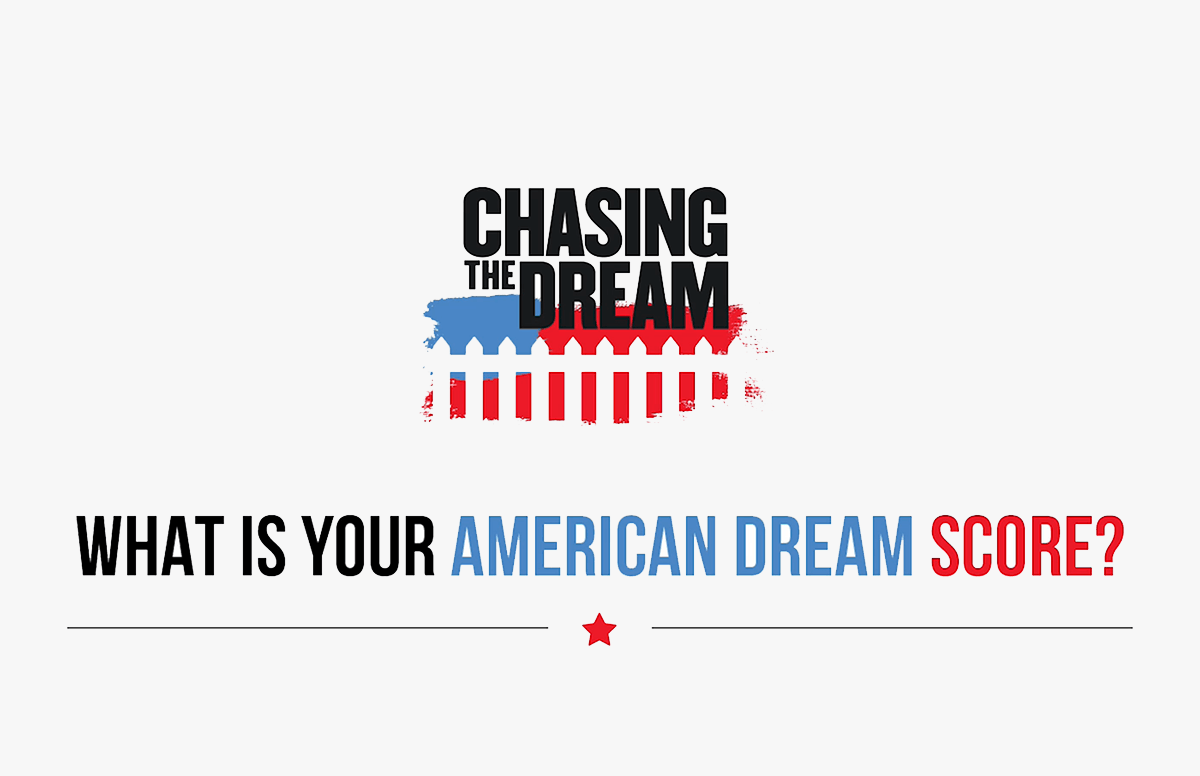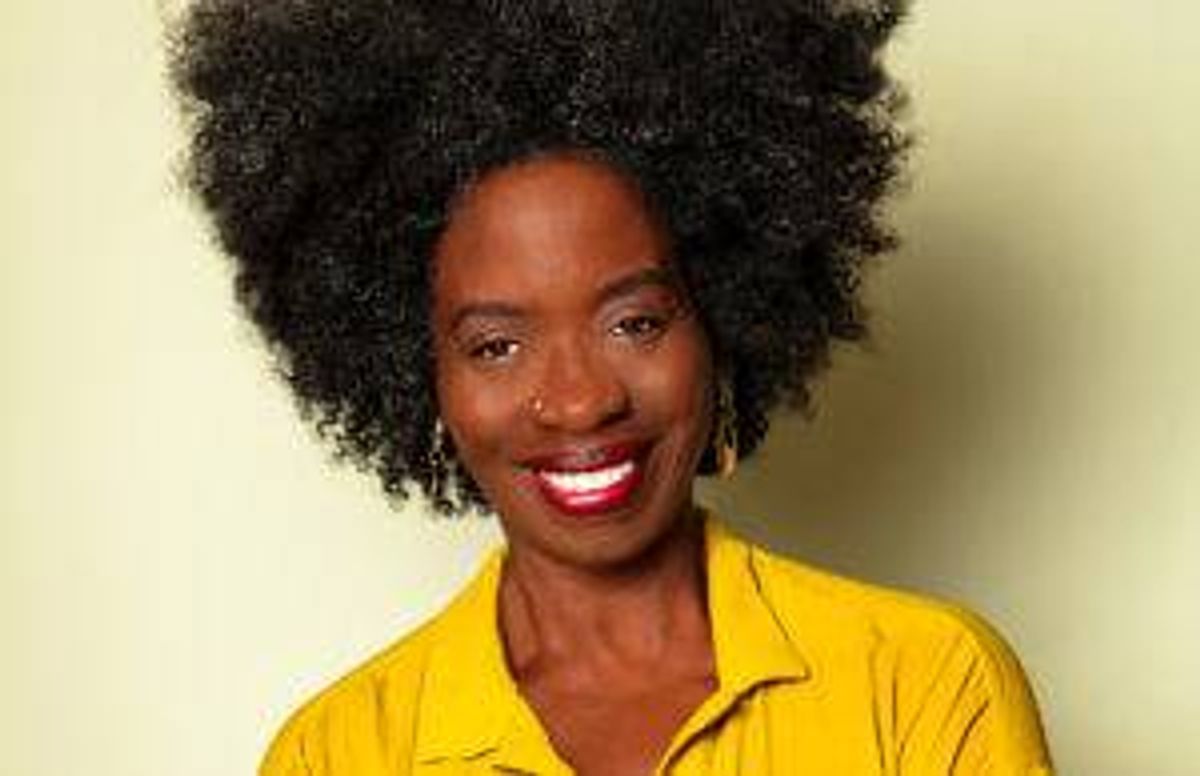Boomers: What's Your American Dream Story?
Take the American Dream quiz and share your story
(Editor’s Note: This story is part of a partnership between Next Avenue and Chasing the Dream, a public media initiative on poverty and opportunity.)

Have boomers achieved the American Dream? And, more to the point, if you’re a boomer — age 53 to 71 — have you?
The first question is a tricky one, but an approximate answer will follow shortly.
The second question is actually an easier one to answer, though. That’s because you can take the American Dream Quiz on the PBS Chasing the Dream site to get Your American Dream Score.
The American Dream Quiz
The American Dream quiz, from the Moving Up initiative and made possible with support from the Ford Foundation, is easy and quick; just 13 multiple-choice questions about your life. Each represents a factor that correlates to social mobility and/or happiness in life. When you get your score, you’ll find out which factors were working in your favor and learn what you had to overcome to get where you are today. Our experiences, after all, are a big factor shaping how we think about the American Dream.
The higher your score, the more you had to overcome; the lower your score, the more you had working in your favor.
Your American Dream Score
The people who’ve shared their Your American Dream Score results on the Chasing the Dream site had results ranging from 49 percent (an immigrant software engineer) to 90 percent (a teenage girl from North Carolina). Former New Jersey Gov. Jim McGreevey scored 60 percent.
As a 61-year-old boomer raised in an upper middle-class suburban New Jersey home who graduated from Northwestern University without any student loans, I’ve had a lot working in my favor. That explains my low American Dream score: 49 percent.
One of Next Avenue’s Influencers in Aging, the Fifty-five, Unemployed and Faking Normal author Elizabeth White, took the quiz, too. You’ll see her score and her essay about it at the end of this post.
What Your American Dream Score Says
Research by Paul Piff, an assistant professor in the Department of Psychology and Social Behavior at the University of California Irvine, and Angela Robinson, a Ph.D. student there, have found that people who experience more advantages in their lives are less likely to recognize how external factors (like the state of the economy, their race and gender, a stable home life and the presence of loving parents and mentors) shape people’s lives.
They wrote on the Chasing the Dream site that the Your American Dream Score calculator addresses these biases “by helping people recognize and acknowledge their own advantages alongside the factors that they themselves have worked for, like their education and professional success.”
Share Your American Dream Story
After you take the American Dream quiz, share your American Dream story on the Chasing the Dream site, as many already have, including McGreevey. Describe the obstacles and advantages you’ve had, either in an essay of under 600 words or in a short YouTube or Vimeo video. You might even want to thank people who’ve helped you get ahead.
Doing so could help keep a national conversation going about the American Dream. As the Chasing the Dream folks say: “If we want to engage people on the issues like poverty, inequality and opportunity, then we must find new ways to bring them into the conversation.”
Boomers and the American Dream
So, back to the boomers: Have they lived the American Dream?
It’s ridiculous and impossible to generalize about a generation of 75.4 million people in an 18-year age cohort, with an enormous range of income and wealth and a diversity of races, of course. That said, overall, the homeownership rate of boomers is a strikingly high 78 percent and boomers have profited from decades of sharp rises in housing and stock market values (with some notable exceptionally terrible periods). So it’s easy to say the boomers are, broadly speaking, living the dream.
But research and statistics show that the American Dream has been more achievable for the older, early-wave boomers in their 60s to early 70s than the younger boomers in their 50s.
As Neil Howe, author of a paper called "Generations in Pursuit of the American Dream," noted, “every cohort through early-wave boomers has seen upward jumps in their lifecycle income — all the way up until 2012. But every younger generation [including the younger boomers] has experienced no such progress.” Howe adds: “First-wave boomers born mainly in the mid-1940s have done best, but late-wave boomers born mainly in the mid-to-late 1950s are underperforming the first-wavers at nearly every age. First-wave boomers in their 40s and 50s, for example, had a median family income nearly $10,000 higher than late-wave boomers later had at the same age.”
Hedrick Smith’s Who Stole the American Dream? describes this story in saddening detail.
Older Boomers Vs. Younger Boomers
The older boomers started their careers young, married young and those who’ve worked in the private sector are among the last who’ll receive guaranteed pensions for the rest of their lives.
The younger boomers, conversely, had higher college costs (and, sometimes, accordant student loans), often began working later, married later, suffered economically from stagflation and have spent most of their careers fending for themselves for retirement. They’ve had to invest on their own, in retirement plans like 401(k)s — which kicked in in 1981 — and IRAs. As you likely know, many haven’t saved very much. The median 401(k) balance for people age 55 to 64 in 2016: $76,000; for people 45 to 54, it’s $60,000, according the Center for Retirement Research.
The younger boomers have also had more of their working years saddled with heavier health insurance premiums and high deductibles. Previously, employers tended to shoulder more of those costs. And the younger boomers were more likely to feel the cruel, massive corporate layoffs of the 1990s.
In a 2016 Freddie Mac survey, 55 percent of older boomers said they were satisfied with the quality of their lives; only 48 percent of younger boomers were. The same survey found that 77 percent of older boomers were confident in their finances in retirement, while 70 percent of younger boomers were. In addition, just 22 percent of older boomers said they live payday to payday; 28 percent of younger boomers said so.

Elizabeth White's American Dream Story
Here’s early-wave boomer Elizabeth White on her American Dream story:
"That can’t be right" was my first reaction when I learned the meaning of my American Dream score of 74. No way have I had more factors working against me in my life than working for me.
So I took the test over a second and then a third time pondering each test question carefully now before answering. But my overall test result did not change.
Could it be, I wondered, if what some might see as barriers, I have come to see as my normal? At 63, I’m used to what comes with being black and female. It’s the landscape I’ve been dealing with my whole life.
I grew up in an intact family adored by my parents. Even as a little girl I knew there was a big difference between what I experienced at home and what I experienced in the world outside. In my predominantly white elementary school, I was seen as an outsider. No one ever picked me for the soccer or volleyball team even though I was a decent athlete. I was always the default choice, picked last after the boy with the bulletproof glasses and the girl who smelled like she peed in the bed.
I remember at 13 going to my first dance at the local teen club and neither the white boys nor the black boys asked me to dance. Back in those days, beauty standards were strict. There were no Lupita Nyong’os gracing the cover of fashion magazines. You were either paint by the numbers pretty or you weren’t. You either fit or you didn’t. And I never did.
Eventually, I stopped trying. I discovered that looking different had its advantages. Instead of hiding my ethnicity, I played it up, piercing my nose with a diamond decades before it was fashionable to do so, and wearing my hair big and bushy.
I began to think maybe there was a place for me in an American Dream that prized individualism and independence. Maybe like in the Burger King commercial, “I could have it my way.”
I was 23. Today I know that individualism and independence are not the whole story in America. There’s an African proverb that says if you are sitting in a shady spot you need to be thanking the people who planted those trees long ago.
Today, I know a lot more about interconnectedness.
There’s not a day I don’t worry that someone could mistake my 12-year-old grandson for a bigger boy and could find his clowning around and horseplay menacing or scary. Today, I know that being an unarmed, innocent child is not enough to protect him.
Lots of people thank me for having the courage to write Fifty-five, Unemployed, and Faking Normal. I have never thought of myself as a courageous person. I just take the next step even when I am scared to death. I take the next step and pray the ground is there.
I also throw a lot of spaghetti at the wall. I reach out to all kinds of people I have no business reaching out to, writing the email equivalent of one of those half-court basketball shots. Lots of times I don’t hear back, but about a third of the time I get the meeting.
I have wondered what direction my life would have taken had I not ended up sitting next to Susan at that workshop for women entrepreneurs 25 years ago. If it happened today, we might not even glance up from our computer screens. Back then, we actually had a conversation. And that single conversation set off a chain of events that got me on the board of a major retail trade association, launched my stores in New York City and started an amazing five-year retail adventure.
I have always had a few friends who are struggling, but that number shot up when I left corporate America to start my retail business all those years ago.
Until then, most of my friends were like peas in a pod with similar education, background and experience. That was not so in the world of small business I entered. There, everyone had a story that zigged and zagged. We bonded around the daily struggle of keeping our businesses afloat.
Some of my best connections have come from friendly acquaintances, not friends. I know that sounds odd, but there’s actually a lot of research to support the power of “loose ties” in helping us to find work/jobs, etc. And I just don’t stick with people in my age range. I let my curiosity lead, and have found common ground with people quite unlike myself.
I grew up with a dad who was a big “people person.” When my mom sent him to the store for milk, he would return with four strangers he’d met along the way. I learned from him to see what’s special about people — and that wisdom can come from anyone.
This story is part of our partnership with Chasing the Dream: Poverty and Opportunity in America, a public media initiative. Major funding is provided by The JPB Foundation. Additional funding is provided by the Ford Foundation.


